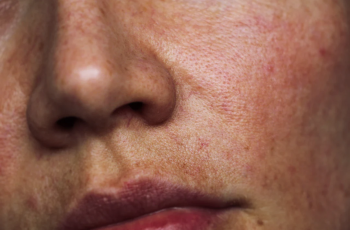
Can You Mix Azelaic Acid with Moisturiser?
If you’re up to date with the latest blog posts here on Beauty Insiders, you will be aware of how a lot of focus has been on the unsung hero, azelaic acid. Now, don’t worry too much if you haven’t, I won’t take it personally, but here is a brief rundown of what the ingredient is and how it works on the skin.
What is azelaic acid?
Naturally derived from grains, such as barley and rye, azelaic acid is an effective skin ingredient that can be used to combat acne and rosacea flare-ups. It can do this with the help of the anti-inflammatory and antimicrobial properties found in the powerhouse.
You’ll often find over the counter products often contain percentages of the acid that are 15% or lower, if you are wanting something that is more potent, you can opt for a professional peel or facial.
It is important that you consult with a doctor or dermatologist about finding the best formula to target any acne concerns, without any drying or irritating side effects. If you wanted to know more about azelaic acid, check out our dedicated blog post about it how it works on the skin.
Now we have had a little refresher, we can dive right in to finding out more about whether you can mix azelaic acid with moisturiser.
How do you use azelaic acid with moisturiser?
There are a variety of skincare products that contain active levels of azelaic acid, from face washes, serums, and toners. This will determine how you use azelaic acid with a moisturiser, but here is a routine to for you to use that is found to be simple and effective.
Cleanse the skin fully with a face wash or cleanser
Follow the cleanser with an exfoliating toner
Apply a layer of hyaluronic acid enriched onto the skin to help lock moisture into the surface
Follow this with a serum containing azelaic acid
Apply a layer of moisturiser
Finish off with an SPF of 30 and above if you are using this routine during the day
Everyone’s skin is different so this routine may require some tweaking to fit and suit, but it is a highly effective routine that allows each active ingredient to perform its benefits on the skin with little to no negative side effects.
The role of a moisturiser is often something that isn’t clear to many of us. Unlike serums, it is only able to work on the outer layers of the skin. If you are wanting to target specific concerns, such as signs of ageing or hyperpigmentation, it’s best to use a serum for that and instead use your moisturiser to create a physical layer on the skin. This will act as a barrier and help protect the complexion from exposure to free radical damage, such as pollution and UV rays.
Do I put on azelaic acid before or after moisturiser?
This is down to personal preference and the formula containing azelaic acid itself, however, if you were to ask for my opinion, I would apply azelaic acid before your moisturiser and after a serum containing hyaluronic acid.
The hyaluronic acid in the serum will help lock moisture into the skin and counteract the drying effects azelaic acid can often have. Follow this with a serum enriched with azelaic acid will not only help it to absorb quickly but will help it deliver quicker results. Finally, apply a physical barrier on the surface of the skin with your moisturiser for overall improved protection.
Can I use niacinamide and azelaic acid together?
Yes, you absolutely can! The beauty of niacinamide is the fact that it carries the same humectant benefits of hyaluronic acid as well as some additional benefits of its own, such as its ability to refine the pores and strengthen the skin barrier. By teaming the pair together, you’ll find there is a potent power duo that will battle against breakouts, spots, and blackheads. You will also find, that if you are prone to dark spots or scarring post acne these two skin ingredients will help counteract the pigmentation of the discolouration of the skin whilst reducing blemishes and preventing any new ones from developing.
Azelaic acid as an ingredient is often favoured by many skin experts and dermatologist to help combat acne, however salicylic acid is considered the more popular choice for many already have an established understanding of the BHA. There is nothing preventing you from using these acids in your routine, it will just be a case of alternating the days you apply them. Just a word of advice, it’s best to use them during your evening routine for added protection against certain free radicals that are present during the day, such as UV light.
What goes first niacinamide or azelaic acid?
Ideally you should apply niacinamide before azelaic acid as this will ensure the skin is hydrated and more absorbent. This will help the acid to penetrate the lower layers whilst avoiding any unwanted skin irritation, such as dryness, itching, redness, and rashes on the skin. Having said that, it is important to remember the basic skin rule of application, starting with the thinnest consistency and working your way up to thicker formulas. Ensuring you apply your products correctly will ensure the skin reaps the rewards of these ingredients allowing them to deliver optimal results.
Can I use azelaic acid on wet skin?
Not really, as azelaic acid is not the same as other acids, such as hyaluronic acid. HA contains humectant properties that benefit from being applied to wet skin as the moisture is locked in, leaving your complexion plumped, nourished, and hydrated. For the best results with azelaic acid, apply it onto semi-dry skin after you used hyaluronic acid, and before your moisturiser.
There you have a little more information about using azelaic acid together with a moisturiser. Don’t forget to get in touch if you have any further skincare questions, you can find one of our skin experts on Instagram.


